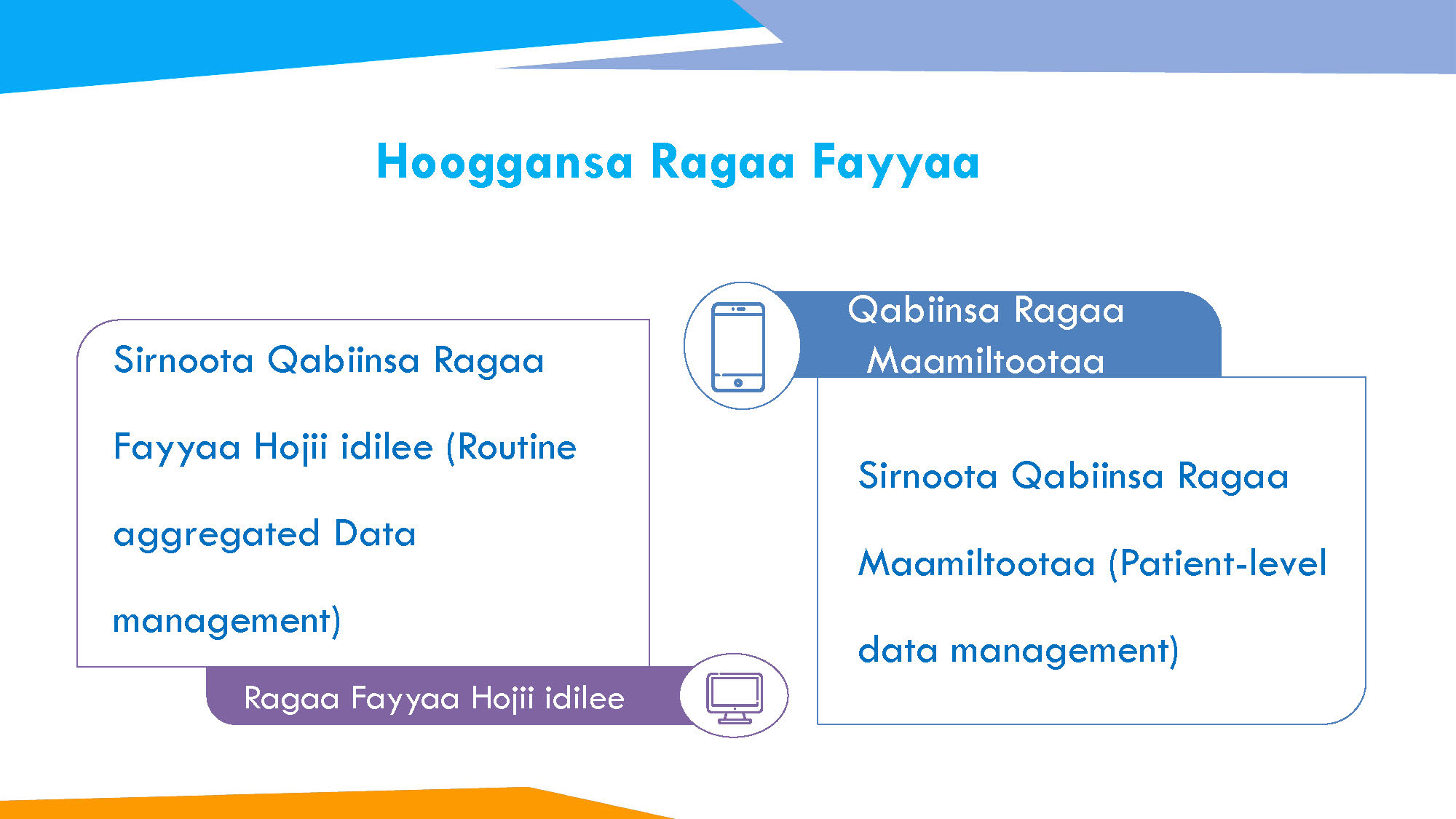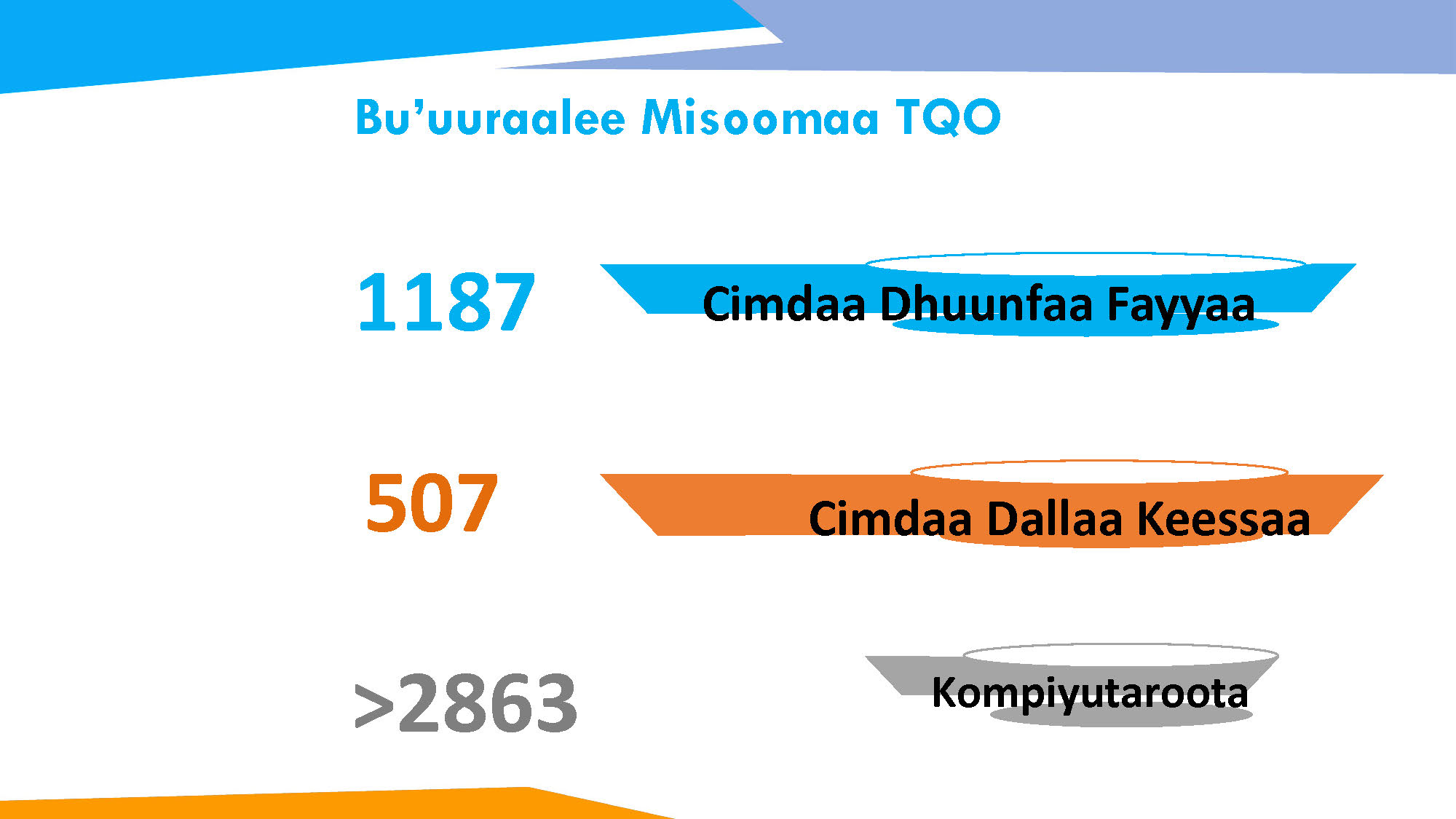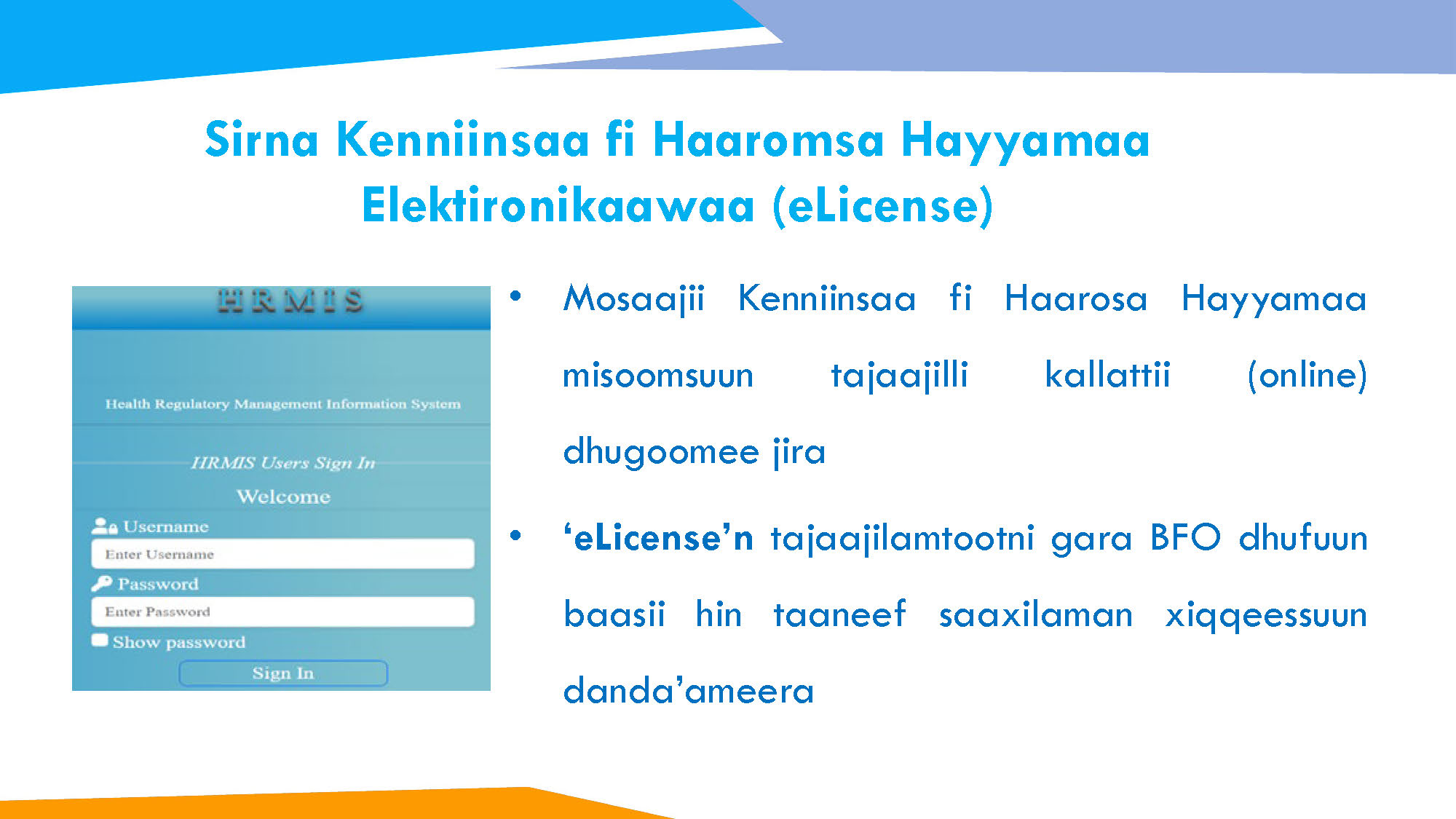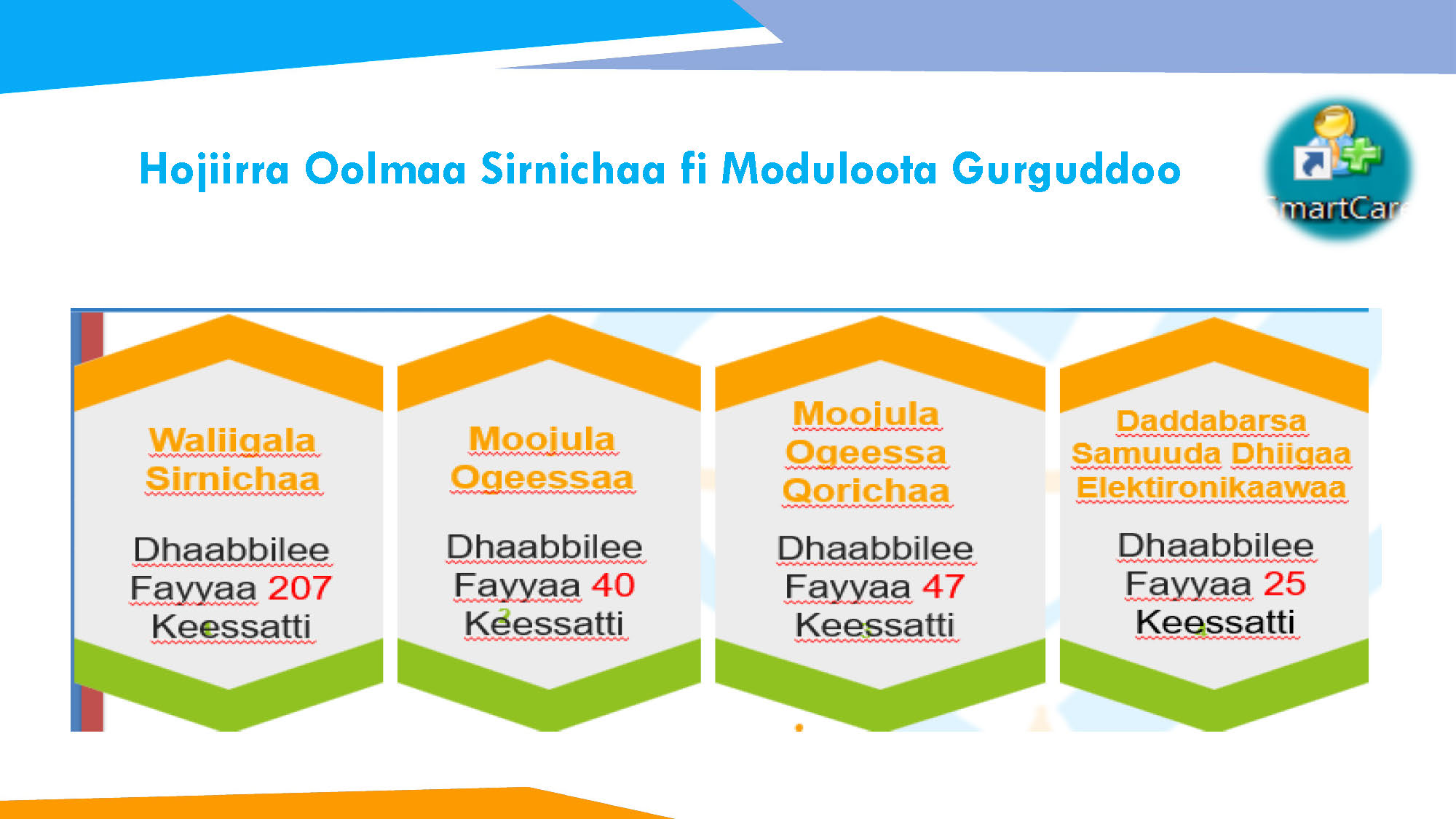Health Information System
The primary aim of digitalizing a Health Information System (HIS) is to improve the efficiency, accessibility, and quality of healthcare delivery by collecting, storing, analyzing, and sharing patient health data digitally, enabling evidence-based decision making for healthcare providers and policymakers; ultimately leading to better patient outcomes and optimized resource allocation.
DHIS2
- DHIS2 is a tool for the collection, validation, analysis, and presentation of aggregate and patient-based statistical data, tailored (but not limited) to integrated health information management activities.
- Over 6,680 HPs, 1,400 above HCs, and 104 hospitals do use the application currently either online or offline including private facilities.
- With its version upgrade to DHIS2.40 in 2024, it came up with a better dashboard for displaying analyzed performances
- Above 3284 users in the health sector participated on the End-user training.
- Also, the region deployed DHIS2-Covac for Vaccine management of COVID-19
Health Information System
- A health information system (HIS) is broadly defined as a system that integrates data collection, processing, reporting, and use of the information necessary for improving health service effectiveness and efficiency through better management at all levels of health services.
- Started with the emergence of reformed HMIS to satisfy the need of quality data for making informed decisions in 2001 EC
- Automating the HMIS followed to maintain quality and timeliness of data as well as assure simplification starting 2003 with pilot implementation









